Key points
- Scientific equations or formulae are used to work things out.
- The meanAn average of a set of data found by adding together all the values in a data set and dividing by the number of values in the set. is a useful average for analysing data.
- An equation may need rearranging to help work out a different part of the equation.
- Using standard units means that scientists around the world can work together more easily.
True or false?
Seconds, hours and years are all units for time.
True.
Equations in science and how to rearrange them
Watch this video that shows skills learnt in maths that are used in science as well.
While you are watching, look out for how units can often relate to the equation
Presenter 1: We are looking at why equations are useful in science.
Presenter 1: Equations are important tools. They help scientists make predictions, calculate rates and make conversions.
Presenter 2: Here we're looking at two runners. We want to make predictions about who will win the 100-metre race. Let us start by seeing how far they can run in five seconds. In five seconds, Runner 1 travels 25 metres and Runner 2 travels 20 metres
Presenter 1: "Faster" means more distance covered at the same time.
Presenter 2: Speed equals distance divided by time. This is an equation. It tells us the relationship between the quantity, speed, distance and time.
Presenter 1: Runner 1's speed is 5 metres per second. We know this because she ran 25 metres in five seconds.
Presenter 2: So, speed equals distance divided by time. 25 metres' distance divided by 5 seconds' time is 5 metres per second.
Presenter 1: Now, let's try to work out how long it would take her to run 100 metres. So, now we are looking to calculate time. We will rearrange the equation from speed = distance divided by time to time = distance divided by speed.
Presenter 2: So, 100 metres' distance divided by 5 metres per second of speed equals 20 seconds of time. We can predict that it will take her 20 seconds to run 100 metres.
Presenter 1: And now let's look at Runner 2. He ran 20 metres in five seconds. Let's work out his speed.
**Presenter 2:**Speed is distance divided by time. So, 20 metres divided by 5 seconds equals 4 metres per second.
Presenter 1: So, how long will it take Runner 2 to run 100 metres?
Presenter 2: We have to rearrange the equation again. So, 100 metres' distance divided by 4 metres per second of speed equals 25 seconds.
Presenter 1: So, he is slower, because it takes him longer to cover the same distance.
Presenter 2: We can predict that he will finish second in the race.
Presenter 1: So, now we can see how important equations are. They help us complete calculations and make predictions.
Calculating the mean
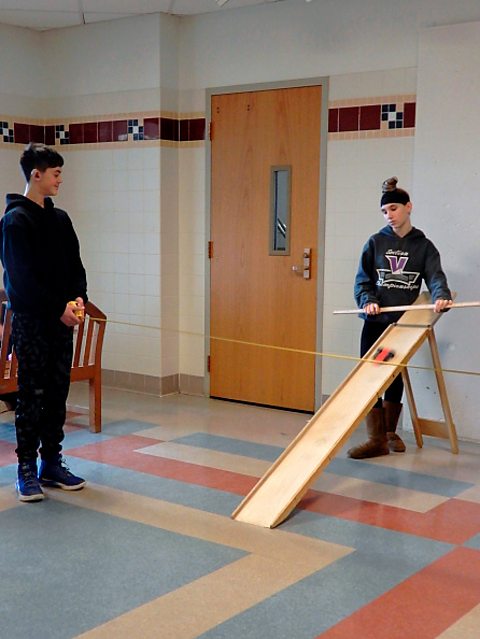
The mean is a type of averageA number that shows a typical value in a set of data. Examples include mean, median and mode.. To find the mean, add up all the results and divide by the number of results.
For example, an experiment into how the angle of a ramp affects the time for a toy car to travel a certain distance. Three readings were taken at the first angle, giving results of 5.2, 5.6 and 5.7 seconds.
To find the mean:
(5.2 + 5.6 + 5.7) ÷ 3 = 5.5 seconds.
Tip: Calculate the numbers in brackets first. If using a calculator, press enter afterwards, before moving onto the rest of the calculation.

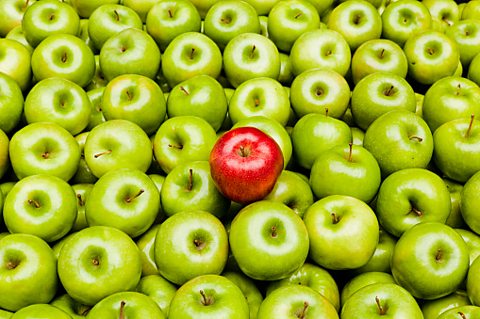
When collecting data, take repeat readings / measurementsTaking another measurement or observation of the same experiment. to make sure they are correct. A reading that is very different to the others is called an outlier.
When an outlier is spotted in a set of results, take the reading again. An outlier is like spotting a red apple in a crate full of green apples.
For example, in the ramp and toy car experiment, if the readings were 5.2 s, 5.6 s and 8.7 s, the third result of 8.7 s is an outlier should be repeated.
Tip: If a repeat reading of an outlier is closer to the other readings, then the outlier is ignored. It would not be used in the calculation of the mean.

What does adding all results together and dividing by the number of results calculate?
The mean.
Rearranging an equation
In science, scientific equations or formulae are used to work things out.
Here is an example:
- Pressure is a measure of how much force is acting on an area.
- To find the pressure, the force acting and the area over which it is acting, need to be known.
- Pressure is calculated by dividing the force by the area: Pressure = Force ÷ Area
Calculate the pressure
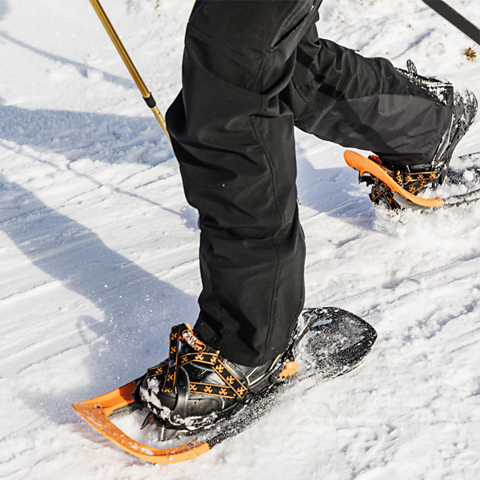


A pair of snowshoes have an area of 2 m² and a force acting on them of 700 N. Calculate the pressure underneath the snowshoes.
Working out:
| Pressure = | ? |
| Force = | 700 N |
| Area = | 2 m² |
Answer:
| Pressure = | Force ÷ Area |
| Force = | 700 N |
| Area = | 2 m² |
Rearrange the equation
The pressure equation can be rearranged to find either the force or the area.
- To find the force acting on an object: Force = Pressure x Area.
- To find the area that a force is acting on: Area = Force ÷ Pressure.
Calculate the force acting on a door when a hand with area 0.02 m² applies a pressure of 250 N/m².
| Force = | Pressure x Area |
| Force = | 250 x 0.02 |
| Force = | 5 N |
Calculate the area that is having a force applied when a person standing on one leg applies a force of 720 N with a pressure of 2200 N/m².
| Area = | Force ÷ Pressure |
| Area = | 720 ÷ 2200 |
| Area = | 0.33 m² |
How to use a formula triangle
Another way to work out the equation is by using this formula triangle.
It relates pressureThe amount of force acting on a certain area. Pressure is measured in pascals (Pa) which are the same as newtons per metre squared (N/m²). (P), forceA pull or push that can affect the speed, shape or direction of movement of an object. Forces are measured in Newtons (N). (F) and areaThe size of a surface. Area is measured in metres squared (m²). (A). Put the three letters in the right place and work out two of them in order to find the third.
Here are the steps to use any formula triangle:
- Cover up the letter with the missing information and use the letters that have information.
- Look where the divide and multiply symbols are on the triangle to find out how to rearrange the formula.
- To work out force (F), it is pressure (P) multiplied by area (A).
- To work out pressure (P), it is force (F) divided by area (A).
- To work out area (A), it is force (F) divided by pressure (P).
Here is another equation that can be rearranged using a formula triangle:
Speed = distance ÷ time
See if you can rearrange this. Click the show answer button to see if you are right.
| Speed = | distance ÷ time |
| Distance = | speed x time |
| Time = | distance ÷ speed |
There is more information on Forces and movement.
Standard units
SI unitsA standard international unit used by scientists. SI units stands for ‘Système International d’Unités’. are used in nearly every country in the world.
The table below shows some of the standard units in the SI system.
| Quantity | Unit name | Symbol |
|---|---|---|
| time | second | s |
| length | metre | m |
| energy | Joule | J |
| mass | kilogram | kg |
| pressure | Pascal | Pa |
| force | Newton | N (1 Pa = 1 N/m²) |
| area | metre squared | m² |
| speed | metres per second | m/s |
Units can give a clue about which equation can be used to work out the answer. For example, speed has units of metres per second. This means that metres - the units for length or distance - divided by seconds - the units for time - gives speed with units of metres per second, m/s.
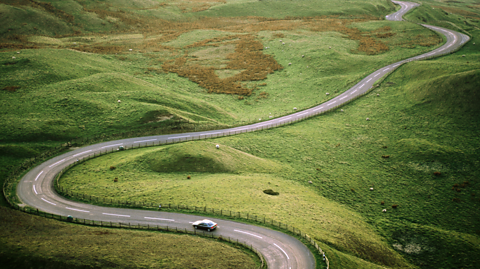
First change the data to the correct standard units otherwise the answers will be wrong.
For example, when calculating the average speed of a car that took 2 hours to travel 101 km, both quantities need to be changed to standard units.

The standard unit for time is seconds: 2 hours = 120 minutes = 7200 seconds
The standard unit for length or distance is metres: 101 km = 101000 m
Speed = distance ÷ time = 101000 ÷ 7200 = 14 m/s
If the data was not converted into standard units and number were just put into the equation, 101 divided by 2 gives a speed of 50.5 m/s, which is incorrect.
What is the standard unit for time?
Seconds.
What are the standard units for speed in science?
Metres per second (m/s).
Test your knowledge
Quiz - Maths skills for science
Did you know?

Using different units can have very serious consequences in the real world. NASA’s Mars Climate Orbiter launched in 1998 and is thought to have burnt and broken up in the atmosphere of Mars. This was partly because units had not been converted by some engineers, meaning the craft travelled too close to the atmosphere.

Why knowing units is important
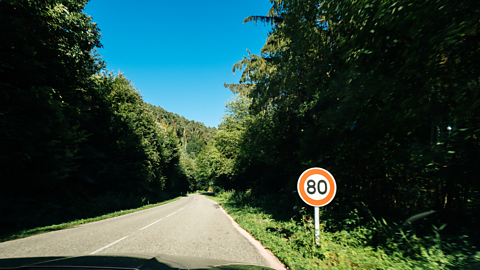
In some countries this sign would mean 80 miles per hour, in others it would mean 80 kilometres per hour. Here on this French road, it shows an 80 kilometres per hour limit.

Working safely in the lab
Find out how to spot risks, hazards and understand hazard symbols

More on Working scientifically
Find out more by working through a topic
- count6 of 11
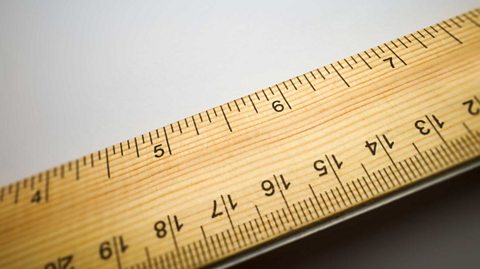
- count7 of 11

- count8 of 11

- count9 of 11
